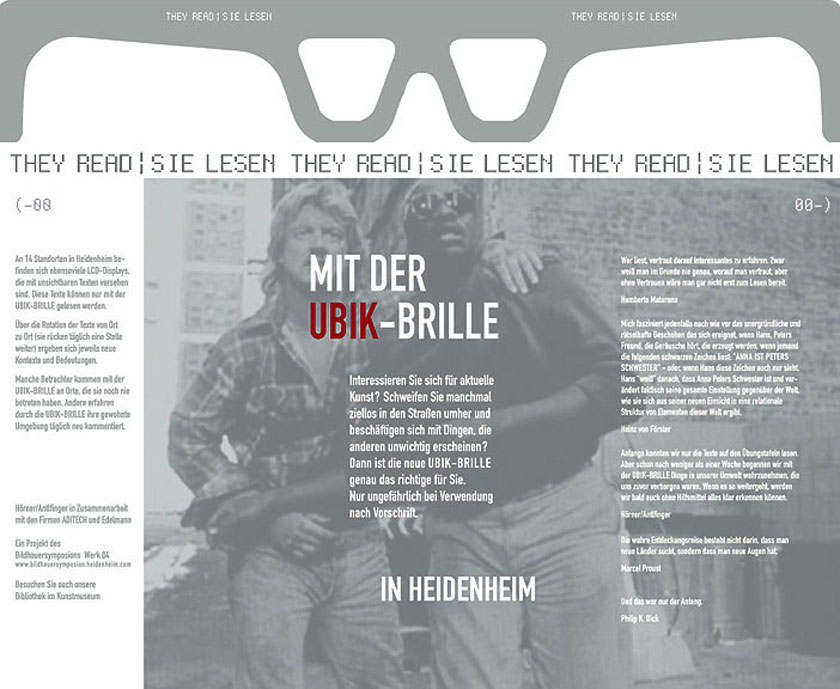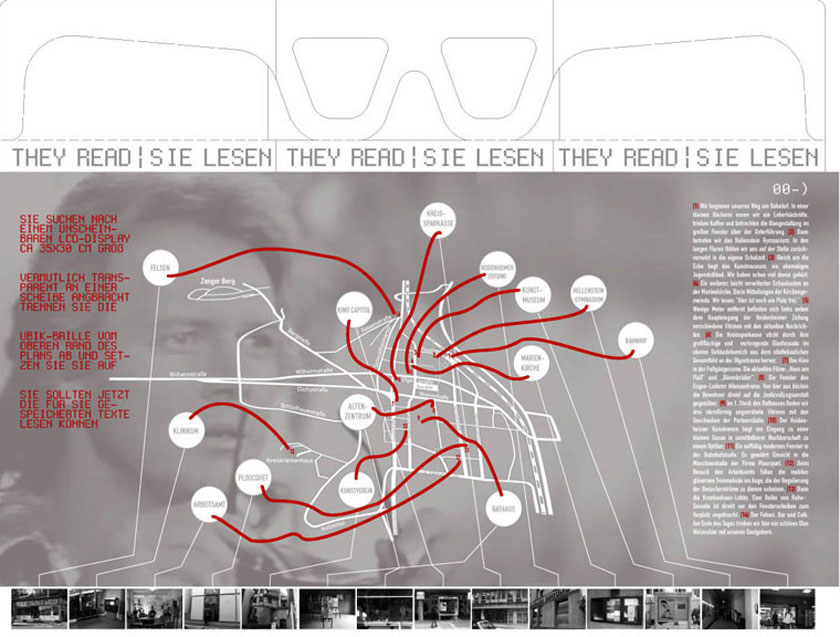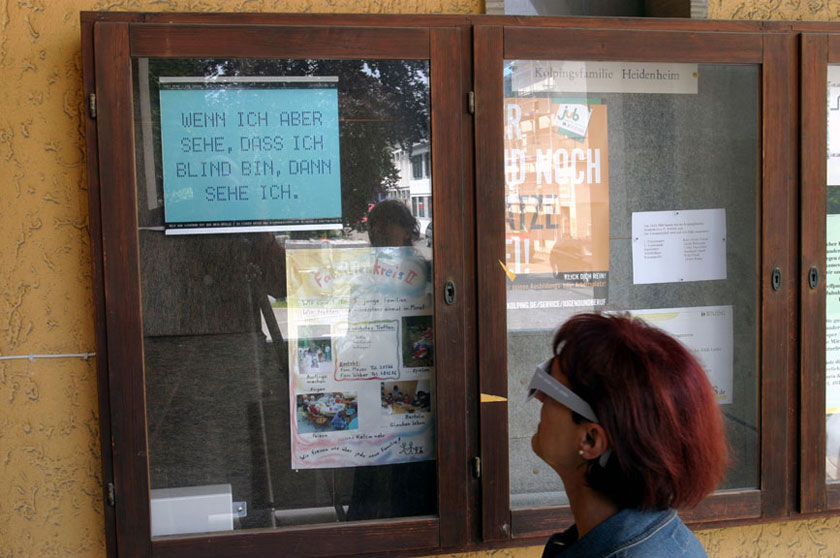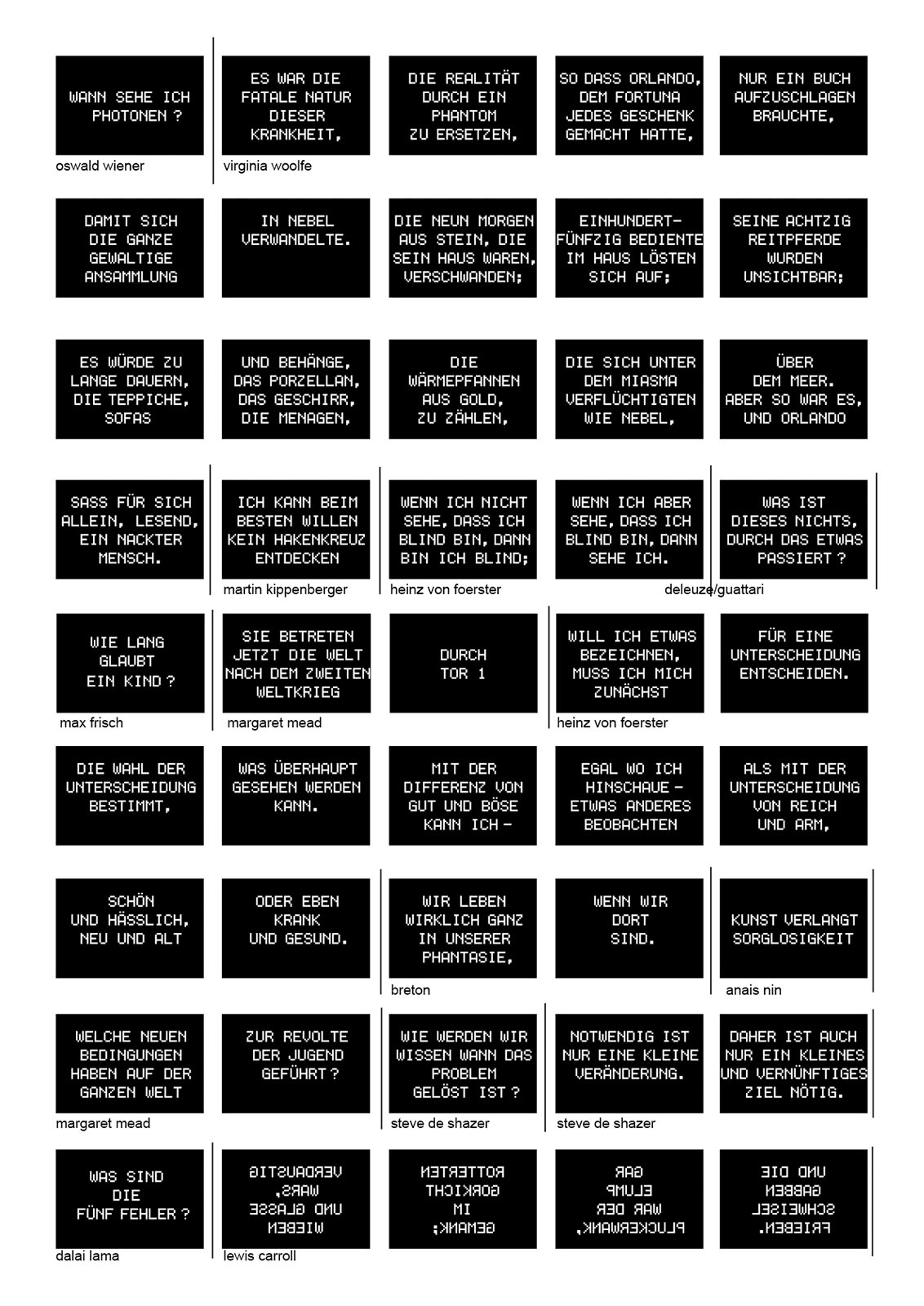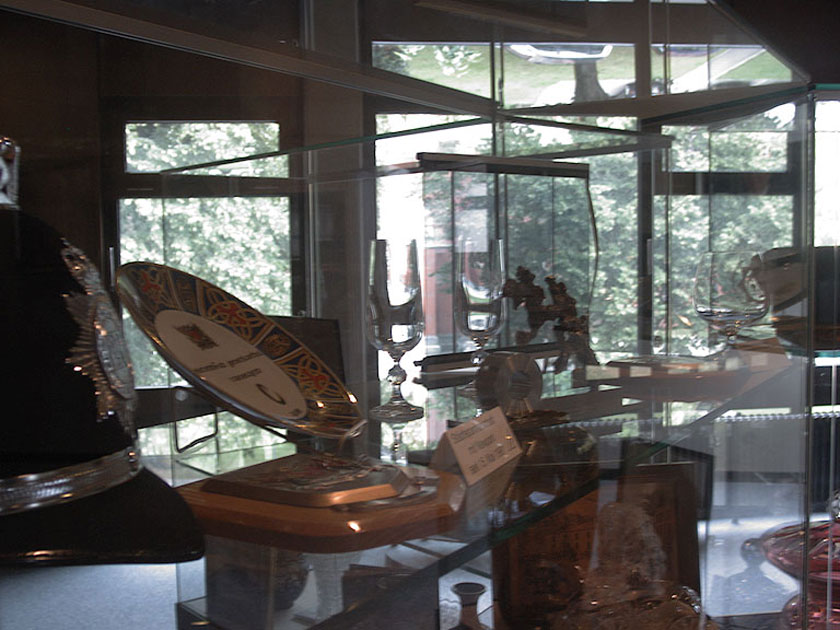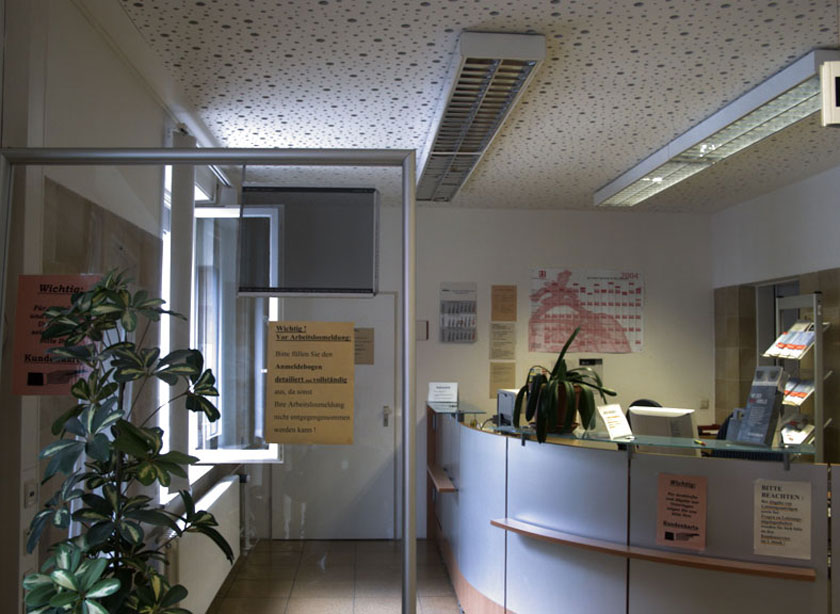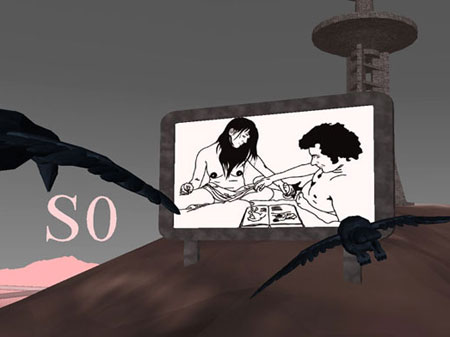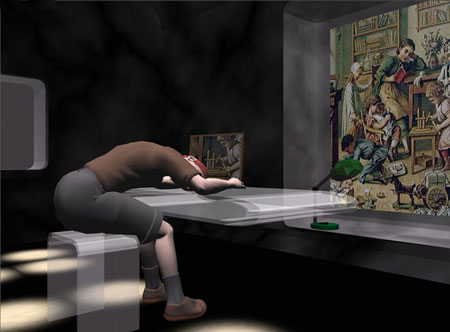In the course of “Werk 04”, a sculpture symposium held in Heidenheim, Hörenr/Antlfinger mounted LCD displays at fourteen public locations. At first glance the screens are blank – the viewer must first put on a pair of “UBIK spectacles”, 1which can be purchased at various outlets in the town. Quotes from the fields of art, literature, and philosophy, all concerned with questions of perception and of the construction of reality, then become visible on the LCD displays. The positions range from André Breton’s “Surrealist Manifesto” to Lewis Carroll’s Behind the Looking-Glass, from Gilles Deleuze and Félix Guattari’s A Thousand Plateaux to Heinz von Foerster’s Truth is the invention of a liar.
Since the text passages move forward from one day to the next, the references and contexts are constantly changing in a manner similar to InfiniteLand. For instance, the impact of Martin Kippenberger’s title Ich kann beim besten Willen kein Hakenkreuz entdecken (For the Life of Me I Can’t See the Swastika in This) is wholly different when we read it in the glass showcases outside the town hall rather than the art museum, where it arouses other associations. The surroundings give the text a new meaning, and the text does the same to its surroundings. And the references that come about remain in permanent flux, just as the viewer, wearing the special glasses, learns to see the town through different eyes while playing a game of discovery.
They Read / Sie Lesen places a focus on the construction of social reality, which is constantly being re-accomplished in the process of viewing. And so with the piece of paper that accompanies the “UBIK spectacles” we read the following statement by Hörner/Antlfinger: “At first we could only read the texts on the practice screens. In less than a week, however, the UBIK spectacles were allowing us to see things around us that had previously been concealed. If things go on like this, we will soon be able to see everything clearly even without artificial assistance.”
Winfried Stürzl
1 The term “UBIK” is derived from Philip K. Dick’s eponymous novel of 1966. The title They Read / Sie Lesen refers to John Carpenter’s science-fiction film They Live (1988), in which the protagonist John Nada stumbles across a pair of special spectacles which reveal to him that the surface of the apparently real world is merely a disguise for the authentic, black-and-white, surface. The world is governed by extraterrestrials and is full of (written) commands and instructions to the human subconscious.
They Read/Sie Lesen
In the town of Heidenheim fourteen locations are fitted with respectively one LCD display on which an invisible text is presented. It is possible to read the text only with the help of UBIK spectacles. These texts move forward from location to location (rotating by one location per day), meaning that new contexts and meanings arise. Some viewers find themselves visiting places they have never seen before with the UBIK spectacles, others find themselves re-assessing their accustomed surroundings on a daily basis.
2004 Installation in Public Space
14 manipulated LCD Displays
Citymap with UBIK Glasses
Handset
- They Live en.wikipedia.org
- UBIK en.wikipedia.org
